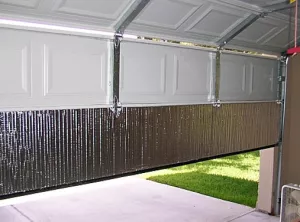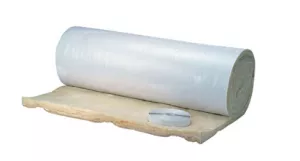
You have gone through the trouble of renovating your entire garage. You’ve added insulation to the walls and ceilings in the means of making the garage a better space for your various DIY projects and hobbies. It turns out you have a non‑insulated garage door, and you’re wondering whether going to the trouble of adding insulation there is worth it. Is it worth it or should you just invest in a new garage door altogether? It’s a common question and one that can be answered in a few parts.
Yes, a non‑insulated garage door can be insulated, if you choose
There are two ways in which people choose to insulate their formerly non‑insulated garage doors:
- Mineral wool blankets: These special blankets can be found in virtually any construction material store, as well as renovation shops. They come in a kit which provides you with a reflective plastic film, along with a flexible roll of mineral wool. You can expect for this to cost anywhere from about $78 up to $100.

- Polystyrene insulating panels: These insulating panels can be found in some nationwide hardware stores, as well as a few big‑box retailers. The kits, in this case, include panels of insulation that are made to cover an 8 or 9‑foot wide garage door. These panels are known for being flammable, however. If you choose to purchase a kit like this, you must cover it with another material that will protect against fire.
The real question is whether the positive aspects of these materials outweighs any of the negative ones. So, be aware, first of all, that while you can add some amount of insulation to the interior door, that will not stop the cold from penetrating to the inside of the garage. The reason for this is based in how garage doors are manufactured. There is no thermal break between the interior and exterior sections of the garage at the endcaps and the joints. So, yes, you will get some insulation, but you are not going to stop cold air from coming inside the garage completely.
There is a single advantage to insulating the interior
When you choose to insulate your formerly non‑insulated garage door with an attached covering of mineral wool, you will reduce the empty metal sounds that a non‑insulated garage door can give off. While this doesn’t do anything for the problem of cold air, it can be a perk.
Buyer beware!
Insulating your garage door with a material not mentioned above should only be done if you can guarantee you are NOT adding any additional weight to the door. The spring system on the door is a counterweight which is designed for the weight of the door. This means that it is calibrated based on the total weight of the non‑insulated door system. Adding more than that weight will require a change to the spring system in order to ensure the weight associated with your insulation is accounted for.
Does this mean I should do it?
Unless your primary goal was to reduce rattling from the non‑insulated door, insulating it is not going to help. A better option is to change out your current garage door for a newer and well‑insulated door. This will protect the area from the cold in winter and the heat of summer.
Our ultimate advice
You can choose to contact us anytime at 506-450-3031. We offer expertise in the sector and know that the performance and durability of a garage door relies on two factors – quality in the installation and quality of the actual products. If you’d like to learn more, we’d be happy to provide a quotation by email.
We are also available to visit your home and explain more about the range of garage doors and accessories that are on the market. This allows us to guide you to the best option for your home. You can also choose to utilize our Design Centre or get ideas from our image gallery.

Add new comment